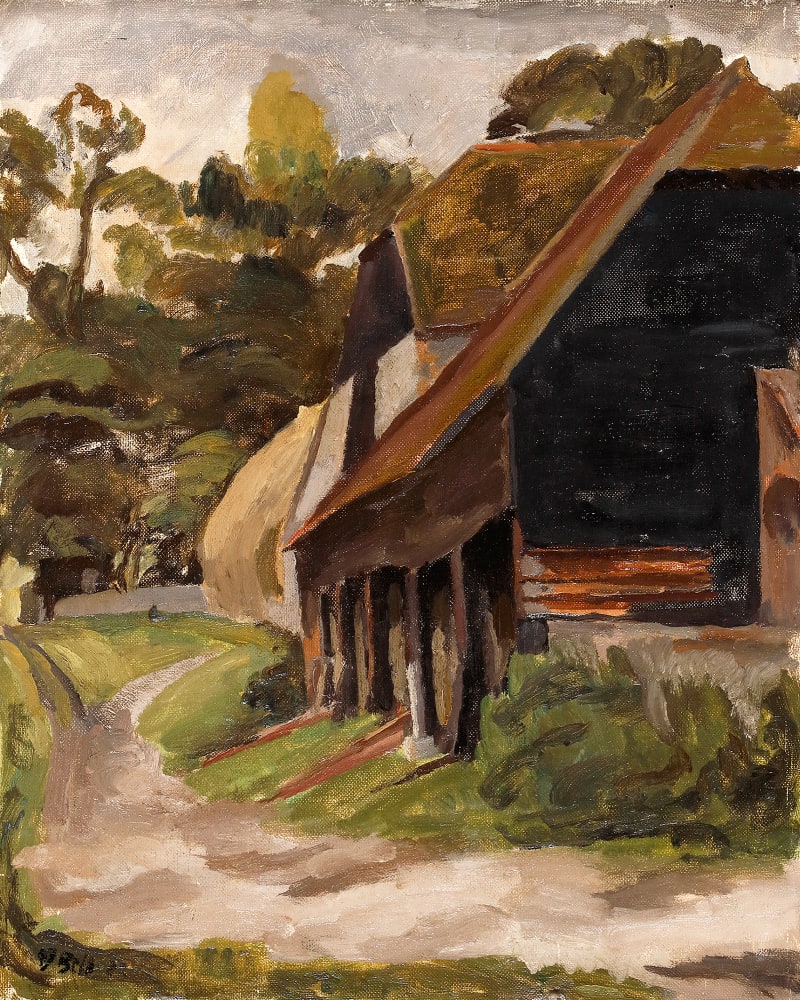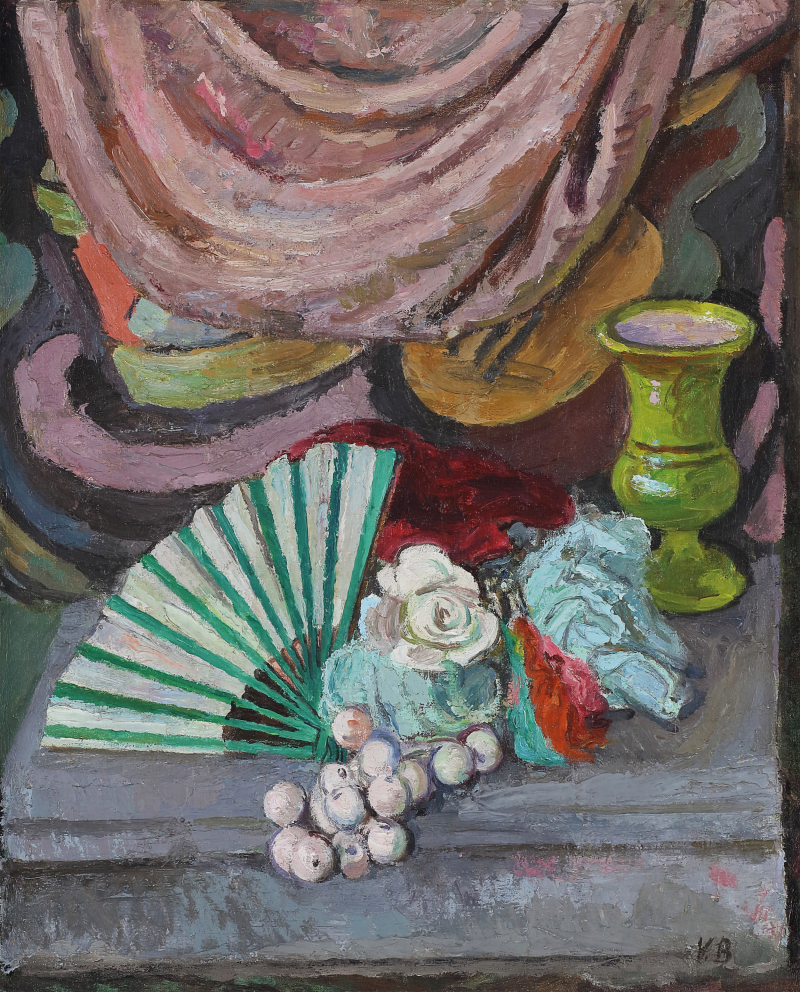Sold out
Julian Bell’s astute comment regarding the art of his grandmother, Vanessa Bell (1879-1961), perfectly encapsulates the essence of the present winter landscape.
Bell moved to Charleston House at the outbreak of the First World War in search of farm work for Duncan Grant and David Garnett, who were both conscientious objectors. They were immediately taken by the rustic farmhouse and over the following decades transformed the house into an eclectic artistic abode famed for its bold interior decoration.
These inter-war years, described by Quentin Bell as ‘the golden age of Charleston’, came to an abrupt end with the death of Julian (son of Vanessa and Clive Bell) in 1937. Two later years later war broke out again and from this moment on, Bell and Grant lived permanently at Charleston.
Bell’s later paintings often appear to offer a form of escape for the artist, who never truly recovered from the death of her son. Paintings of Charleston by...
Bell moved to Charleston House at the outbreak of the First World War in search of farm work for Duncan Grant and David Garnett, who were both conscientious objectors. They were immediately taken by the rustic farmhouse and over the following decades transformed the house into an eclectic artistic abode famed for its bold interior decoration.
These inter-war years, described by Quentin Bell as ‘the golden age of Charleston’, came to an abrupt end with the death of Julian (son of Vanessa and Clive Bell) in 1937. Two later years later war broke out again and from this moment on, Bell and Grant lived permanently at Charleston.
Bell’s later paintings often appear to offer a form of escape for the artist, who never truly recovered from the death of her son. Paintings of Charleston by...
| Julian Bell’s astute comment regarding the art of his grandmother, Vanessa Bell (1879-1961), perfectly encapsulates the essence of the present winter landscape. Bell moved to Charleston House at the outbreak of the First World War in search of farm work for Duncan Grant and David Garnett, who were both conscientious objectors. They were immediately taken by the rustic farmhouse and over the following decades transformed the house into an eclectic artistic abode famed for its bold interior decoration. These inter-war years, described by Quentin Bell as ‘the golden age of Charleston’, came to an abrupt end with the death of Julian (son of Vanessa and Clive Bell) in 1937. Two later years later war broke out again and from this moment on, Bell and Grant lived permanently at Charleston. Bell’s later paintings often appear to offer a form of escape for the artist, who never truly recovered from the death of her son. Paintings of Charleston by Grant and Bell are generally governed by bright and warm pallets which depict Sussex in the height of summer; reflections of soft clouds reflected in the pond and dappled light bouncing off the surrounding trees. The present painting, however, depicts one of the barns at Charleston and was likely painted during the winter of 1940-1941, which was notable for its heavy snowfall. Bell depicts the landscape enclosed in blankets of luminous white snow which cover the fields surrounding Charleston and the barn in the foreground. Quentin Bell, son of Vanessa and Clive Bell, drew a parallel between their first winter at Charleston, and the harsh winter of 1940-1941, presumably when this painting was completed; 'The snow was thicker and the frost deeper than we were ever to see it again until 1940. One of my earliest memories was walking over to Peaklets, the cottage just visible on the further side of the front field. Here a spring still ran. We went over to fill buckets of water for the house.'[2] Landscape painting, both at home in Sussex and during her ventures abroad to Italy and France, forms a substantial troupe within Bell’s oeuvre. Her engagement with modernist movements in Paris is here evident through the stylised forms layered in a manner that challenges traditional rules of perspective; synthesizing the techniques of artists such as Paul Gauguin and Paul Cezanne, Bell manipulates this pictorial space. Her approach to simplified shapes is also likely informed by her early career, which was intertwined with the Omega ethos and an aim to celebrate decorative design. A spirit of this decorative stylisation equally perfuses the present work; the barn’s geometric structure and the cast shadow on the snow demonstrate Bell’s fascination with colour, space and form. [1] J. Bell ‘Landscapes Near and Far’ in Vanessa Bell (eds. S. Milroy & I. A. C. Derjardin) (Philip Wilson Publishers: London, 2017) p. 154. [2] Q. Bell quoted in A. Garnett, H. Garnett, R. Shone, Charleston, Past and present (The Hogarth Press: London, 1993) p. 87. |






